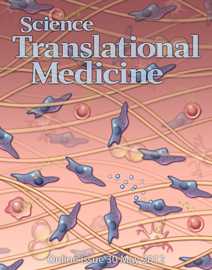PNAS:利用锌指核酸酶技术建立寡核苷酸突变疾病模型
2012-06-17 mili 生物谷
利用锌指核酸酶技术(zinc-finger nucleases)在一细胞期的胚胎中进行基因打靶是一种高效的诱变方式,这种方法可以应用在小鼠、大鼠和家兔中。最近该技术被用在了基因插入和基因敲除上。 本文中,研究人员利用锌指核酸酶技术制造疾病相关的基因突变。通过提供同源重组的模板,在Rab38基因上引入了寡核苷酸突变。Rab38基因编码一个小的鸟苷三磷酸酶,这些酶的作用是调节胞内囊泡运输。以前的研究
利用锌指核酸酶技术(zinc-finger nucleases)在一细胞期的胚胎中进行基因打靶是一种高效的诱变方式,这种方法可以应用在小鼠、大鼠和家兔中。最近该技术被用在了基因插入和基因敲除上。
本文中,研究人员利用锌指核酸酶技术制造疾病相关的基因突变。通过提供同源重组的模板,在Rab38基因上引入了寡核苷酸突变。Rab38基因编码一个小的鸟苷三磷酸酶,这些酶的作用是调节胞内囊泡运输。以前的研究报道过用锌指核酸酶进行基因插入和敲除,核苷酸的置换尚属首次。
通过锌指核酸酶技术在单细胞胚胎中进行基因打靶是不依赖与胚胎干细胞的基因修饰方法,这种方法能够明显的缩短实验周期。研究人员认为,利用锌指核酸酶技术在一细胞期胚胎中进行基因修饰建立疾病模型是一种行之有效的手段。(生物谷 Bioon.com )

doi:10.1073/pnas.1121203109
PMC:
PMID:
Modeling disease mutations by gene targeting in one-cell mouse embryos
Melanie Meyera, Oskar Ortiza, Martin Hrabé de Angelis, Wolfgang Wursta, and Ralf Kühna
Gene targeting by zinc-finger nucleases in one-cell embryos provides an expedite mutagenesis approach in mice, rats, and rabbits. This technology has been recently used to create knockout and knockin mutants through the deletion or insertion of nucleotides. Here we apply zinc-finger nucleases in one-cell mouse embryos to generate disease-related mutants harboring single nucleotide or codon replacements. Using a gene-targeting vector or a synthetic oligodesoxynucleotide as template for homologous recombination, we introduced missense and silent mutations into the Rab38 gene, encoding a small GTPase that regulates intracellular vesicle trafficking. These results demonstrate the feasibility of seamless gene editing in one-cell embryos to create genetic disease models and establish synthetic oligodesoxynucleotides as a simplified mutagenesis tool.
本网站所有内容来源注明为“梅斯医学”或“MedSci原创”的文字、图片和音视频资料,版权均属于梅斯医学所有。非经授权,任何媒体、网站或个人不得转载,授权转载时须注明来源为“梅斯医学”。其它来源的文章系转载文章,或“梅斯号”自媒体发布的文章,仅系出于传递更多信息之目的,本站仅负责审核内容合规,其内容不代表本站立场,本站不负责内容的准确性和版权。如果存在侵权、或不希望被转载的媒体或个人可与我们联系,我们将立即进行删除处理。
在此留言














#疾病模型#
93
#寡核苷酸#
58
#核苷酸#
67
#PNAS#
50